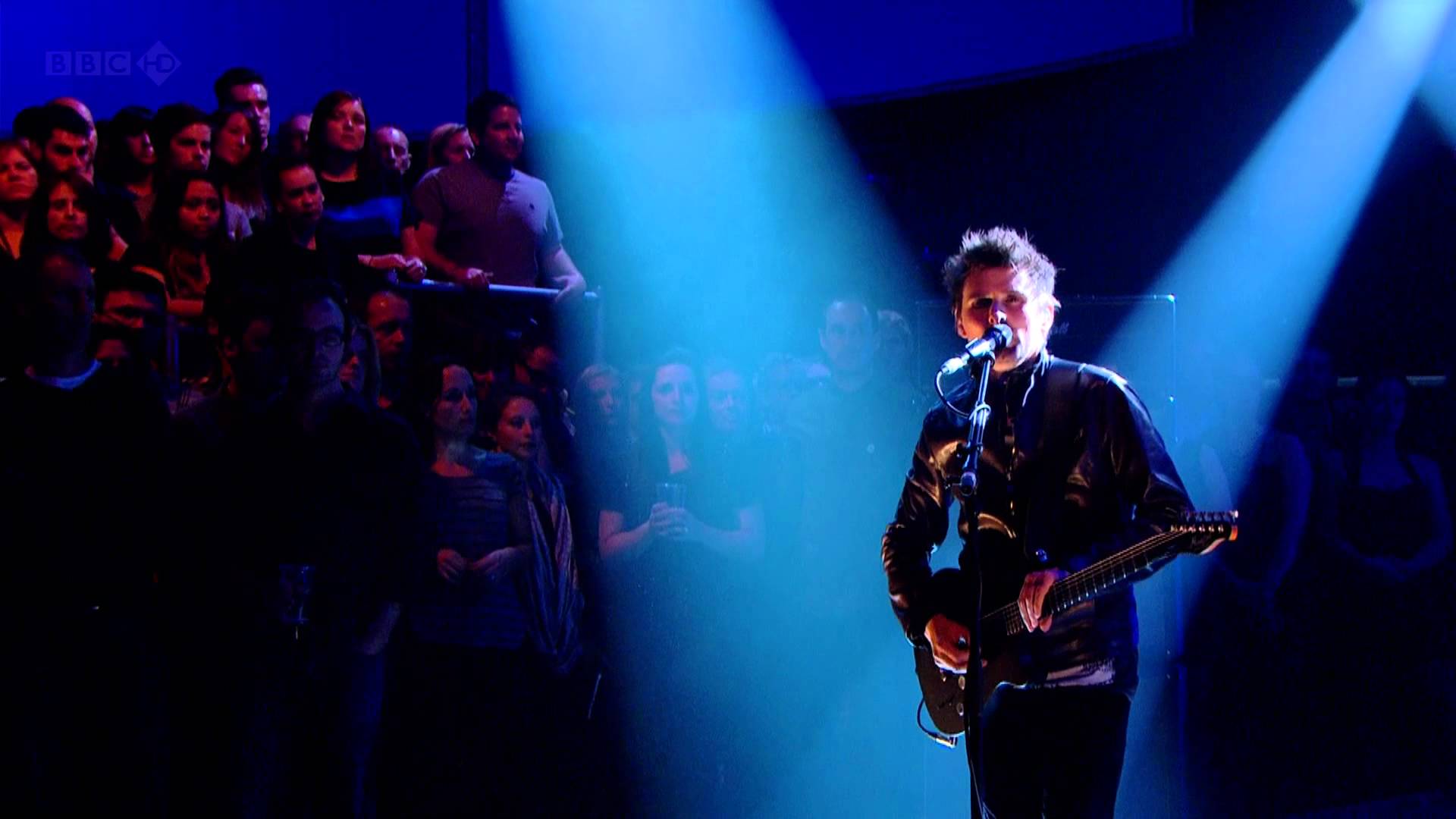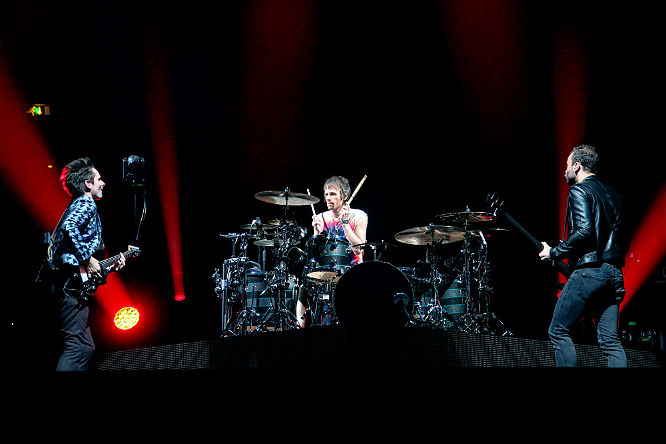Mix Breakdown: Structure, Production, and Spike Stent’s Genius
Discovering “Madness” by Muse
A Song That Defies Expectations
Some bands are good at reinventing themselves. It's hard to do, especially when you have been successful for a long time. The pressure to not take your fans by surprise so much that you loose them is heavy. There can be a lot of people depending on continuous success of a certain familiar sound. That is why the first time I heard the song Madness on the radio, while driving a bit too fast on small deserted US backroads, the last thing on my mind was that it was the new single by Muse. It was so catchy that I actually stopped on the side of the road and launched Soundhound on my phone to figure out what it was before the song ended (don't text and drive).
Stream the Track
iTunes: https://itunes.apple.com/us/album/the-2nd-law-deluxe-version/id563015686
Spotify: https://play.spotify.com/track/0jPYuB3gBNU9f2C5tjvyPj
Why the Structure Is So Unique
The Pressure-Cooker Format
It is a very interesting track besides the fact that it does not sound like the usual Muse stuff. It's what I call a 'pressure cooker'. It keeps brewing for a long time before it provides the necessary relief. The structure is not the usual radio driven verse/chorus-verse/chorus. It is a verse/refrain, which in itself is interesting for a radio bound track. If you pay attention on your first listen, you'll notice that there is no big repetitive part that stands as a chorus, instead the hook is pervasive and comes back more often. After a 4-bar intro, the verse consists of 2 X 8 bar identical cycles followed by an 8-bar B section (which ends by 'What you need'). A guitar solo takes the place of the 3rd verse's initial 16 bars (with the same harmonic cycle) then the B Section is elevated and finally takes off. It is repeated 8 times and then turns into a bridge of sorts (same music bed different melody and lyrics) after two cycles. The ending is a replay of the most iconic part of the verse, the Beach Boy-esque 'mamamamamamaaaaa'.

How the Verse/Refrain Works
Background info: The 'refrain' part of a verse/refrain is usually a single line or word that repeats at the end of the verse. (Go listen to 'Blowing in the Wind' or 'The Time they are a Changing' by Bob Dylan) Sometimes writers use the verse refrain structure but play with the location of the refrain line (Go listen to Yesterday by a pretty good Brit band called The Beatles.. for a clear example. Hint: the refrain is 'yesterday') If you are confused about the differences between verse/chorus and verse refrain, listen to Yesterday, then immediately listen to Yellow Submarine (same brit band, different album).. it should help.
The Evolving Refrain Motif
In our song, the refrain is a combo of that mamamamamamama Beach Boy thing and the alliteration of its rhythm in the bass line. Fun. Notice how the riff only goes all the way to the full 'madness' word at the very end of the song. Neat stuff.

Production Analysis
Minimalistic but Powerful Arrangement
Production-wise there is a lot of Queen and a lot of George Michael in there (don't believe me? Go check out Faith and I Want To Break Free for a refresher.) I think it is impressive how effective the production is, considering how simple it is. The verse is built on a couple of synth basses (Panned in stereo), a kick and a clap/snare thing, and of course the refrain/hook. Half way through the verse a single-note glassy pad enhances the section and marks the end of it by its withdrawal. Pure and elegant. Hard to do. There is no subdivision, no hat, no shaker, just the two drums and the basses (the subdivision is somewhat provided by the bass but still).
Clever Transitions and Queen References
On the second song system (a 'song system' is a verse/refrain combo) a guitar comes in to double the bass riff, and the Queen-like background vocals come in and lift the whole thing up. The first real chords come in halfway thru on that digital Marimba synth patch we have all been skipping all our lives when browsing presets (works good here).Notice the reversed piano note coming out of nowhere to mark the transition to the B section (Another Queen reference, go check out Another One Bites the Dust). Cool stuff.

The Brian May-Style Guitar Solo
The guitar solo is pure Brian May circa We Will Rock You. It'd doubled perfectly which is a sign that it was carefully written. Pay attention to the differences in sound and performance from left to right which create the interesting texture. Also notice how the vocal riff is kept in there to entertain you while the guitar does its thing.
The B Section and Its Elevation
When the B section launches again, it's basically the same arrangement as previously except for the subdivision coming in on what seem to be shakers and some oooooo vocal pads to fill it up. Take a minute to go back and forth between this B section and the previous to see how much a difference the addition of subdivision makes. Wild, isn't it? Also notice how the snare changes location and role. See how the mass of the pads pushes the snare from its super forward and center place to a more diffuse 'in the back' placement. The kick stays the same. Do you like that change? Had you noticed it?
The B section morphs into the bridge by the strength of the new vocal lines and a different sentiment unleashing on us. (Come to me...Come on and rescue me) but the music is essentially the same. Do notice the hat pattern on the left coming up after the tom fill signifying the start of the bridge.

The Bridge and Final Build
The bridge does an insta-morph into the end part, which is nothing but the refrain and its long awaited closure. It is valuable to note that most 'verse/refrain with bridge' songs use the bridge as a pause to separate the 2nd and 3rd verse/refrain so that you don't hear all three identical song systems in a row. In this particular case, the writer(s) stretched the B section of his 3rd verse and extended it into a bridge with no plans to get back to another verse. They went around the third verse monotony by turning it into a guitar solo. Why not? It works. Going back to a full verse after that bridge would have been too much. Plus he probably said everything he had to say by that point. He could have chosen to say what he said in the bridge over a verse section but he probably felt that the more epic sound of the bridge was a better bed for the sentiment he tried to get across. (Check it out again)
Mix Analysis by Spike Stent
Dry vs Wet: A Bold Contrast
Mix-wise, it is very educational to see what Spike Stent did here. The verse feels bone dry. Right? There actually is some sort of a short delay on the lead vocal and the 2 basses interplay creates space but no tail to anything. The pad is pretty wet in contrast allowing it to feel like it's placed behind the rest. The snare and kick are dry. (Notice how the kick is not mixed very loud). On the 2nd verse the guitar is also dry. As are background vocals. Marimbas follow suit. There is a reason for this. Everything feels very intimate and present. The tone is set and the pressure is on. There is a lot of room to play with. What happens on verse 3/guitar solo? Yup, he opens some tail reverbs on the drums. He's prepping you for the change of soundstage that come sin on the forthcoming B section.

The B Section Space Explosion
Then when the B section hits, the whole wet to dry ratio changes. This is a particularly crucial and difficult part. It is very hard to keep a vocal dry when it is surrounded by so much stuff. Which is why if you pay attention you'll hear reverb and delays appearing on the vocals but they are very discreet so you don't get pulled out of the narrative and the point of view of the singer does not change too much. Everything else gets lots of space (Background vocals, especially) keeping the dry feel for the lead.
The Challenge of Dense Arrangements
The thing that is fascinating to me is that even Spike Stent was not able to keep the drums present in the same manner in this section as they are in the verses. It is very difficult to maintain the presence of these kinds of drums when the surroundings change so drastically. The sustained elements around them suck all the air around them and make them feel smaller and puny, and adding reverb to combat that pushes them back in the mix. It is the ultimate battle and the reason why heavily layered mixes tend to not sound as good as lighter more sparse productions. But Spike Stent is one of the best mixers around today, so what do you think? Was this change in texture an aesthetic choice? Or was it a 'best he could manage with the elements he was given' situation? Would you do something different?
A Great Study Piece for Producers
In the end this is great study stuff. This whole record is also amazing because it gives you the opportunity to study the differences in philosophy and sound between three prominent mixers. Spike Stent, Chris Lord Alge and Rich Costey (all mastered by Ted Jensen). I recommend you listen to the whole record and take notes on which are your favorite mixes before you look up who did what. Don't cheat. It's a good exercise and a good way to form your taste.
Cheers,
Fab